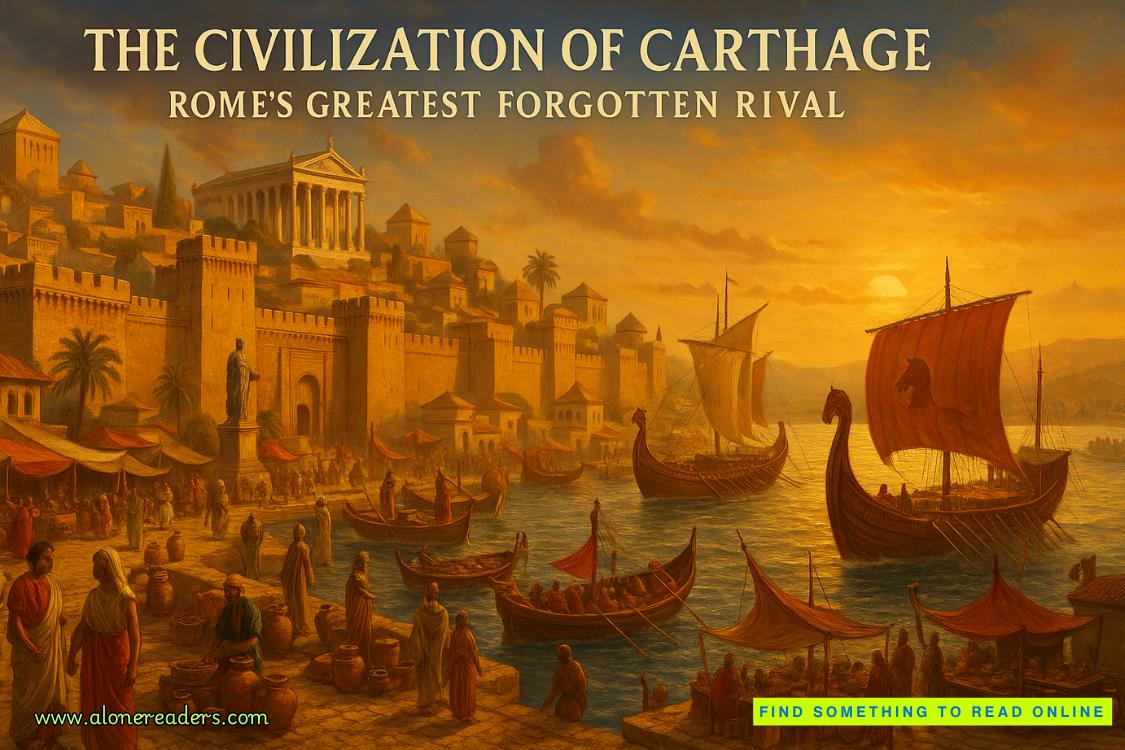Page 4 of The Time Paradox (Artemis Fowl 6)
“Remember, Holly, this is just reconnaissance. Go down and check the sensor. Those things are two hundred years old, and the problem is more than likely a simple overheat. All you need to do is go where I tell you and fix what I tell you. No indiscriminate blasting involved. Understand?”
Holly snorted. “I can see why Caballine fell for you, Foaly. You’re such a charmer.”
Foaly snickered. “I don’t rise to jibes anymore, Holly. Marriage has mellowed me.”
“Mellowed? I’ll believe that when you last ten minutes in a room with Mulch without throwing a hoof.”
The dwarf Mulch Diggums had been at various times enemy, partner, and friend to Holly and Foaly. His greatest pleasure in life was stuffing his face, and not far behind that was irritating his various enemies, partners, and friends.
“Perhaps I need a few more years of marriage before I get that mellow. A few more centuries, in fact.”
The island was large in Holly’s visor now, surrounded by a monk’s fringe of foam. Time to stop the chitchat and proceed with the mission, though Holly was tempted to circle in a holding pattern so she could talk some more with her friend. It seemed as though this was the first real conversation they’d had since her return from Limbo. Foaly had moved on with life in the past three years, but for Holly her absence had lasted only a few hours, and, though she had not aged, Holly felt cheated of those years. The LEP psychiatrist would have told her she was suffering from Post-time-travel-displacement Depression, and offered to prescribe a nice shot to cheer her up. Holly trusted happy-shots just about as much as she trusted brain implants.
“I’m going in,” she said tersely. This was her first solo mission since debriefing, and she did not want anything less than a perfect report, even if it was only Kraken Watch.
“Copy,” said Foaly. “You see the sensor?”
There were four bio-sensors on the island relaying information back to Police Plaza. Three pulsed a gentle green in Holly’s visor display unit. The fourth sensor was red. Red could mean many things. In this case, every reading had risen above normal levels. Temperature, heartbeat, brain activity. All on the danger line.
It must be a malfunction, Foaly had explained. If not, the other sensors would show something.
“I have it. Strong signal.”
“Okay. Shield and approach.”
Holly twisted her chin sharply left until her neck bone clicked, which was her way of summoning the magic. It wasn’t a necessary movement, since the magic was mostly a brain function, but fairies developed their own tics. She let a dribble of power into her limbs and vibrated out of the visible spectrum. Her Shimmer Suit picked up her frequency and amplified it so that a tiny spark of magic went a long way.
“I’m out of sight and going in,” she confirmed.
“Understood,” said the centaur. “Be careful, Holly. Commander Kelp will be reviewing this video, so stick to your orders.”
“Are you suggesting that I occasionally stray from the rule book?” said Holly, apparently horrified by the very notion.
Foaly sniggered. “I am suggesting that you may not own a copy of the rule book, and if you do possess one, you certainly have never opened it.”
Fair point, thought Holly, swooping down toward the surface of Uunisaari.
Whales are thought to be the world’s largest creatures. They are not. The kraken can stretch to three miles in length and have been a staple of Scandinavian legend since the thirteenth century, when they appeared in the Orvar-Odd saga as the fearsome lyngbakr. Early descriptions of the kraken are the most accurate, describing the sea creature as an animal the size of a floating island whose real danger to ships was not the creature itself, but the whirlpool it created when it sank into the ocean. But by the Middle Ages the legend of the kraken had been confused with that of the giant squid, and each credited with the most fearsome attributes of the other. The squid was pictured as big as a mountain, while the peaceful kraken grew tentacles and developed a bloodlust to rival that of the deadliest shark.
Nothing could be further from the truth. The kraken is a docile creature whose main defenses are its sheer size and the bulk of shell, gas, and fat cells enclosing a melon-size brain, which provides it with just enough intelligence to feed itself and shed its shell. Underneath the crust of rock, weed, and coral, the kraken resembles nothing more than the common acorn barnacle, albeit a barnacle that could easily house an Olympic stadium or two.
Kraken enjoy a lifespan of several thousand years, thanks to an incredibly slow metabolism and a huge network of support systems surrounding their soft centers. They tend to settle in a food-rich or magical environment and remain there until the food or energy residue runs out. Nestling in the middle of an archipelago near a human port provides not only camouflage but an abundant source of edible material. And so this is where kraken are found, anchored to the seabed like gigantic limpets, vacuuming city waste through their gills and fermenting it into methane in their vast stomachs. But if human garbage is their salvation, it is also their damnation, for increasingly high toxin levels have rendered the kraken sterile, and now there are less than half a dozen of the ancient creatures left in the oceans.
This particular kraken was the oldest of the bunch. According to shell scrapings, old Shelly, as the small dedicated Kraken Watch referred to it, was more than ten thousand years old, and had been masquerading as an island in Helsinki Harbor since the sixteenth century, when the town was known as Helsingfors.
In all that time, Shelly had done little but feed and sleep, feeling no urge to migrate. Any need he may have felt to move on was dulled by the seepings of a paint factory built on his back more than a hundred years previous. For all intents and purposes, Shelly was catatonic, having emitted no more than a couple of methane flashes in over fifty years, so there was no reason to believe that this red light on his sensor was anything more than a crossed wire, and it was Holly’s job to uncross it. It was a standard first-day-back-on-the-job kind of mission. No danger, no deadline, and little chance of discovery.
Holly turned her palms into the wind, descending till her boots scraped the roof of the island’s small restaurant. Actually there were two islands, separated by a small bridge. One was a genuine island, and the other larger section was old Shelly nestled into the rock. Holly ran a quick thermal sweep, finding nothing but a few rodents and a blotch of heat from the sauna, which was probably on a timer.
Holly consulted her visor for the sensor’s exact location. It was twelve feet underwater, tucked below a rocky ledge.
Underwater. Of course.
She stowed her wings, midair, then plunged feetfirst into the Baltic Sea, corkscrewing to minimize the splash. Not that there were any humans close enough to hear. The sauna and restaurant did not open until eight, and the nearest fishermen were on the mainland, their rods swaying gently like rows of bare flagpoles.
Holly vented the gas bags in her helmet to reduce buoyancy, and sank below the waves. Her visor informed her that the water temperature was a little over ten degrees, but the Shimmer Suit insulated her from cold shock and even flexed to compensate for the slight pressure increase.
“Use the Critters,” said Foaly, his voice crystal clear through the vibration nodes over her ears.
“Get out of my head, centaur.”
“Go on. Use the Critters.”
“I don’t need a tracer. It’s right there.”
Foaly sighed. “Then they shall die unfulfilled.”
The Coded Radiation Tracers were microorganisms bathed in radiation of the same frequency as the object being located. If you knew what you were looking for before leaving Foaly’s workshop, then the Critters would bring you right to it; though they were a little redundant when the sensor was a few feet away and beeping on your screen.
“Okay,” moaned Holly. “I wish you would stop using me as a guinea pig.”
She pulled back a watertight flap on her glove, releasing a cloud of glowing orange mites into the water. They
bunched for a moment, then sped off in a ragged arrow toward the sensor.
“They swim, they fly, they burrow,” said Foaly, awed by his own achievement. “God bless their tiny hearts.”
The Critters left a glowing orange wake for Holly to follow. She pulled herself below a sharp ledge, to find the Critters already excavating the growths covering the sensor.
“Now, come on. That is handy. Tell me that’s not useful to a field officer.”
It was very useful, especially since Holly only had ten minutes of air left; but Foaly’s head was big enough as it was.
“A gill helmet would have been more useful, especially since you knew the sensor was underwater.”
“You have more than enough air,” argued Foaly. “Especially since the Critters are clearing the surrounding area.”
The Critters ate away the rock and moss covering the sensor until it gleamed like the day it came off the assembly line. Once their mission was completed, the Critters flickered and died, dissolving in the water with a gentle fizz. Holly switched on her helmet lights and focused both beams on the alloy instrument. The sensor was the size and shape of a banana and covered with an electrolytic gel.
“The water is pretty clean, thanks to Shelly. I’m getting a decent picture.”
Holly topped up her suit buoyancy a few notches until she was at neutral, and hung in the water as still as she could.
“Well, what do you see, Foaly?”
“The same as you,” replied the centaur. “A sensor with a flashing red light. I need to take a few readings, if you wouldn’t mind touching the screen.”
Holly laid her palm on the gel so that the omnisensor on her glove could sync with the ancient instrument.
“Nine and a half minutes, Foaly, don’t forget.”
“Please,” snickered the centaur, “I could recalibrate a fleet of satellites in nine and a half minutes.”
It was probably true, thought Holly, as her helmet ran a systems check on the sensor.
“Hmm,” sighed Foaly, thirty seconds later.
“Hmm?” repeated Holly nervously. “Don’t hmm, Foaly. Dazzle me with science, but don’t hmm.”
“There doesn’t seem to be anything wrong with this sensor. It is remarkably functional. Which means . . .”
“That the other three sensors are malfunctioning,” concluded Holly. “So much for your genius.”
“I did not design these sensors,” said Foaly, wounded. “They’re old Koboi gear.”
Holly shuddered, her body jerking in the water. Her old enemy Opal Koboi had been one of the People’s leading innovators, until she decided that she would prefer to pursue all criminal avenues to crown herself queen of the world instead. Now she was housed in a specially constructed isolation prison cube suspended in Atlantis, and spent her time shooting off mail to politicians, pleading for early release.















